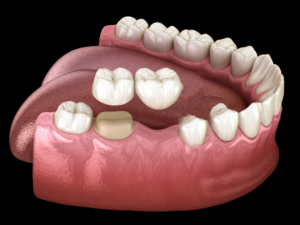Barnet University Hospital
Contact
Hours
- Monday: 9:00am – 9:00pm
- Tuesday: 9:00am – 6:00pm
- Wednesday: 9:00am – 9:00pm
- Thursday: 9:00am – 9:00pm
- Friday: 9:00am – 5:00pm
Barnet University Hospital, a leading healthcare institution located in New York, offers a comprehensive range of medical and dental services. This fictional hospital is renowned for its state-of-the-art facilities and commitment to providing high-quality care to all patients.
Medical Services
General Medicine and Surgery
- Emergency Services: Open 24/7, equipped with advanced life-saving technology.
- Inpatient and Outpatient Care: Comprehensive services including internal medicine, cardiology, neurology, orthopedics, and more.
- Surgical Specialties: General surgery, trauma surgery, minimally invasive procedures, and specialized surgical interventions.
Specialized Departments
- Oncology: Cutting-edge cancer treatment and research center.
- Pediatrics: Comprehensive care for infants, children, and adolescents.
- Women’s Health: Maternity services, gynecology, and reproductive health.
Dental Services
General Dentistry
- Routine Checkups and Cleanings: Preventive care to maintain oral health.
- Fillings and Restorations: Treatment of cavities and damaged teeth.
Specialized Dental Care
- Oral and Maxillofacial Surgery: Surgical extraction of teeth, removal of diseased tissue, and corrective jaw surgery.
- Orthodontics: Braces and other orthodontic treatments for children and adults to correct dental alignment and bite issues.
- Pediatric Dentistry: Specialized dental care for children, including preventive treatments like sealants and fluoride applications.
- Periodontics: Treatment of gum disease and other conditions affecting the tissues surrounding the teeth.
- Prosthodontics: Replacement of missing teeth with crowns, bridges, dentures, and dental implants.
Implant-supported Crown
An implant-supported crown is a dental restoration that replaces a single missing tooth using a dental implant as the foundation. It is a common and effective treatment option for restoring both function and aesthetics in cases where a tooth has been lost due to decay, trauma, or other dental issues. Here's an overview of the process involved in placing an implant-supported crown:
- Evaluation and Treatment Planning:
- Before undergoing implant treatment, the patient will undergo a thorough dental examination, including clinical assessment and radiographic evaluation (such as dental X-rays or CBCT scans).
- The dentist or oral surgeon will assess the patient's oral health, bone density, and suitability for implant placement.
- A comprehensive treatment plan will be developed based on the patient's individual needs and goals.
- Implant Placement:
- The first step in the process involves surgically placing the dental implant into the jawbone at the site of the missing tooth.
- This is typically done under local anesthesia to ensure the patient's comfort during the procedure.
- The implant is surgically inserted into the jawbone and allowed to integrate (fuse) with the surrounding bone tissue through a process called osseointegration. This integration provides a stable foundation for the implant-supported crown.
- Healing and Osseointegration:
- After implant placement, a healing period of several months is usually required to allow for osseointegration to occur.
- During this time, the implant fuses with the surrounding bone tissue, becoming firmly anchored in the jawbone.
- Temporary restorations may be placed during the healing period to maintain aesthetics and function.
- Abutment Placement:
- Once osseointegration is complete, an abutment is attached to the implant.
- The abutment is a connector piece that protrudes from the gumline and serves as the attachment point for the implant-supported crown.
- Impressions and Fabrication of Crown:
- After the abutment is placed, impressions of the implant site and surrounding teeth are taken to create a custom-made crown.
- The crown is fabricated in a dental laboratory using durable and lifelike materials that mimic the appearance and function of natural teeth.
- Final Restoration:
- Once the crown is completed, it is attached to the abutment and secured in place using dental cement or a screw-retained mechanism.
- The crown is adjusted and polished to ensure proper fit, function, and aesthetics.
- The patient's bite and occlusion are checked to ensure comfort and stability.
- Postoperative Care and Maintenance:
- After the implant-supported crown is placed, the patient will receive instructions on postoperative care and maintenance.
- Regular dental check-ups and professional cleanings are essential to monitor the health of the implant and surrounding tissues.
- Good oral hygiene practices, including brushing, flossing, and using antimicrobial mouthwash, are important for long-term success.
Implant-supported crowns offer numerous benefits, including improved aesthetics, stability, and function compared to traditional tooth replacement options. With proper care and maintenance, an implant-supported crown can provide long-lasting and natural-looking results, enhancing both oral health and quality of life. If you are considering implant treatment, it's important to consult with a qualified dental professional to determine the best treatment plan for your individual needs.
Cantilever Dental Bridges
Cantilever dental bridges are a type of dental prosthesis used to replace missing teeth by anchoring the artificial tooth or teeth to adjacent natural teeth on only one side. Unlike traditional dental bridges, which rely on support from both sides of the gap, cantilever bridges utilize adjacent teeth on only one side for support. Here's an overview of cantilever dental bridges:
- Indications:
- Cantilever bridges are typically used when there is only one natural tooth adjacent to the edentulous (toothless) area that can serve as an abutment for the bridge.
- They are commonly employed in situations where replacing a single missing tooth in the posterior (back) region of the mouth.
- Treatment Planning:
- Before fabricating a cantilever bridge, the dentist will conduct a comprehensive examination of the patient's oral health, including assessing the condition of the adjacent teeth and the quality of the bone and soft tissues.
- Radiographic imaging, such as dental X-rays or CBCT scans, may be used to evaluate the bone density and determine the feasibility of placing a cantilever bridge.
- Preparation:
- The adjacent natural tooth serving as the abutment for the cantilever bridge will be prepared by removing a portion of its enamel to create space for the bridge.
- Local anesthesia is typically administered to numb the tooth and surrounding tissues to ensure the patient's comfort during the procedure.
- Impression and Fabrication:
- Once the abutment tooth is prepared, impressions (molds) of the teeth and surrounding tissues are taken to create an accurate model of the dental arch.
- The dental laboratory uses these impressions to fabricate the cantilever bridge, customizing the size, shape, and color of the artificial tooth to match the patient's natural dentition.
- Placement and Cementation:
- The cantilever bridge is placed and cemented onto the prepared abutment tooth using dental adhesive cement, ensuring a secure and long-lasting restoration.
- The fit, occlusion (bite), and aesthetics of the bridge are checked by the dentist to ensure that it meets the patient's expectations.
- Any necessary adjustments are made to optimize the fit and function of the bridge.
- Postoperative Care:
- After the cantilever bridge is placed, the patient will receive instructions on postoperative care and maintenance.
- Regular dental check-ups and professional cleanings are important for monitoring the health and integrity of the bridge and surrounding teeth.
- Good oral hygiene practices, including daily brushing, flossing, and using antimicrobial mouthwash, are essential for maintaining the health of the bridge and preventing decay or gum disease.
Cantilever dental bridges offer a conservative and effective solution for replacing single missing teeth in situations where adjacent teeth are not suitable for traditional bridge placement. However, they may not be suitable for all cases, and the long-term success of a cantilever bridge depends on factors such as the strength and health of the supporting abutment tooth and proper oral hygiene maintenance. If you are considering a cantilever bridge, it's important to consult with a qualified dentist to determine the best treatment option for your individual needs.




